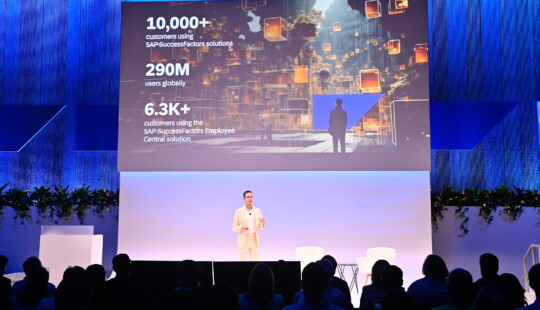The human experience at work is getting far more personalized, workers’ mental health is impacting productivity, and people managers have a pivotal role in listening to and acting on evolving employee expectations. These were the three major workforce shifts that Jill Popelka, president of SAP SuccessFactors, shared in her opening keynote at this year’s virtual SuccessConnect event.
Popelka saw these changes creating a new social contract with employees and redefining work.
“Research shows one of the top three things people look for in a job today is purpose. It’s no longer about fitting your life into work; it’s about fitting work into your life,” she said. “We have to do more. C-suiters are the vision-setters and business drivers, but our managers are our culture advocates. They are the doers and planners, the coaches and leaders and so much more. As we move from linear career paths to constantly changing roles, we need strong managers who are invested in their people and dynamic teams that are nimble, fast, and challenge oriented. Human resiliency is our superpower.”
How HR Leaders Can Shape the Future of Work
Popelka netted out leadership’s role in rethinking and reinventing human resources (HR) to fundamentally transform the work experience for every employee during a fascinating conversation with Meg Bear, senior vice president of Product, Engineering, and Operations for SAP SuccessFactors, and Maryann Abbajay, chief revenue officer of SAP SuccessFactors.
As 90% of HR leaders reported increased stress levels in the past year similar to all workers, Abbajay saw the profession itself undergoing its own transformation: “HR leaders are facing the same challenges as employees – burnout, balancing work and family care, and anxiety over uncertainty. They need data and insights on employees that they can translate into strategies for the business.”
Diversity and Inclusion Benefits People and the Business
Noting that a recent Qualtrics study showed the top priorities among job seekers were benefits, flexibility, and purposeful work, Popelka said that the biggest change was cultural. When she asked Bear about the importance of diversity in the workplace, the latter pointed out that diversity was just the first step.
“Transformation and culture is all about people, and we at SAP think about diversity as this concept of zero inequality,” said Bear. “When we can bring all of our selves to work, we can help make great things happen. We want to create a workforce that not only has diversity in the workforce, but also has inclusion, belonging, and opportunity for everyone.”
Delivering a Continuous Learning Employee Experience
Abbajay spotlighted companies worldwide that transformed employee learning in the past year to provide individualized, on demand, mobile experiences.
“At Singapore Airlines, people were grounded so they focused on individualized learning to re-skill people using SAP SuccessFactors Learning. They were ready when planes started flying again,” she said. “Royal Mail is using SAP SuccessFactors Work Zone to power learning, communicate with their 140,000 employees, and empower people managers to drive transformation in making a fantastic difference. They built a personal development platform and called it ‘The Fridge’ — think trying to keep the fridge stocked when you have hungry teenagers. Employees have responded and want more.”
Later during the keynote, customers including Whirlpool and Zurich Insurance Company shared how their respective organizations were using SAP SuccessFactors software to develop employees and accelerate digital transformation for business results.
Cloud Computing Creates Effective Learning Culture
Everyone agreed that cloud computing provided HR leaders and their organizations with the foundation to create and foster a learning culture.
“The cloud is helping our customers be more innovative,” said Popelka. “With things like onboarding and learning in virtual reality, companies are creating new ways to collaborate with deskless workers, and using AI and machine learning to improve diversity and inclusion.”
Bear added that the power was in the data, meaning that “dynamic individualized solutions [backed by] data to bring opportunity to every worker, and to help bring their skills to [address] the needs of the business.”
HXM Redefines Work as We Know It
Organizations worldwide have rallied to help managers and their people meet the unprecedented challenges of the past year. Popelka said that HR was central to creating the best experience for every employee to build a future-ready workforce innovating faster in the cloud.
Case in point was the introduction of the dynamic teams vision, brought to life in a demonstration of the newly launched SAP SuccessFactors Opportunity Marketplace. This marketplace solution is designed to upskill employees, fueling their personal growth and development and increasing organizational agility.
“We know these are challenging times,” Popelka said. “It comes down to how well you support your people through this culture change. It’s about creating a sense of belonging, encouraging lifelong learning, and tapping into the right technology. And we’re doing all of this with human experience management.”
Follow me: @smgaler



